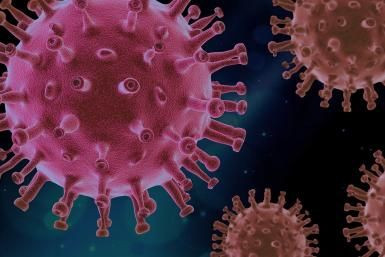Coronavirus Research: Scientists Find 14 COVID-19 Mutations, One Especially Virulent

KEY POINTS
- It was unclear whether the mutations were responsible for the variations in severity of the outbreak in different parts of the world
- Scientists worry the speed with which the virus is mutating could make developing an effective vaccine more difficult
- More than a quarter-million people have died worldwide so far
Scientists at the Los Alamos National Laboratory have identified a strain of the coronavirus that is more virulent than the one that touched off the pandemic and has become the dominant strain infecting Americans. The scientists said in a paper that has yet to be peer reviewed they identified 14 strains of the virus and cited one as particularly contagious.
The discovery could make development of an effective vaccine more difficult. The paper was posted late last week on BioRxiv to serve as an early warning for researchers working on drugs and vaccines.
The more virulent strain, identified through gene sequencing, first surfaced in Europe in February and migrated to the East Coast of the United States, quickly becoming dominant. It is unclear, however, whether the mutation accounts for differences in severity in outbreaks in different parts of the world or whether it is more lethal.
“Three related factors combine to make this disease so dangerous: Human beings have no direct immunological experience with this virus, leaving us vulnerable to infection and disease; it is highly transmissible; and it has a high mortality rate,” the authors said.
The report was based on an analysis of 6,000 coronavirus sequences from around the world collected by the Global Initiative for Sharing All Influenza Data. Italy saw one of the first countries to see the new mutation. That was at the end of February. By March 15, the strain was in New York.
Like influenza, the coronavirus appears to accumulate changes as it spreads. If it fails to wane as the weather gets warmer, the changes will accumulate more quickly, making development of an effective vaccine more difficult. Vaccine developers had been hoping the virus would remain stable.
The mutation appears in the virus’ spikes, which allow it to infect respiratory cells.
“We did not anticipate such dramatic results so early in the pandemic,” the researchers wrote after describing a series of changes as the COVID-19 swept Europe.
The added: “Viruses bearing the mutation Spike D614G are replacing the original Wuhan form of the virus rapidly and repeatedly across the globe. We do not know what is driving this selective sweep, nor for that matter if it is indeed due the modified spike and not one of the other two accompanying mutations.”
The Los Alamos scientists were assisted by researchers at Duke University and the University of Sheffield in England.
“COVID-19 is not business as usual. There are several biological factors that make COVID-19 particularly dangerous, these are due to the nature of the beast, and the biology of this virus in people. The effectiveness with which we respond will determine how much we will be able to temper the outcomes of the epidemic,” study leader Bette Korber wrote in a letter to New Mexico Gov. Michelle Lujan Grisham in early March.
Globally, the virus has infected more than 3.6 million people, killing more than a quarter-million.
© Copyright IBTimes 2025. All rights reserved.






















